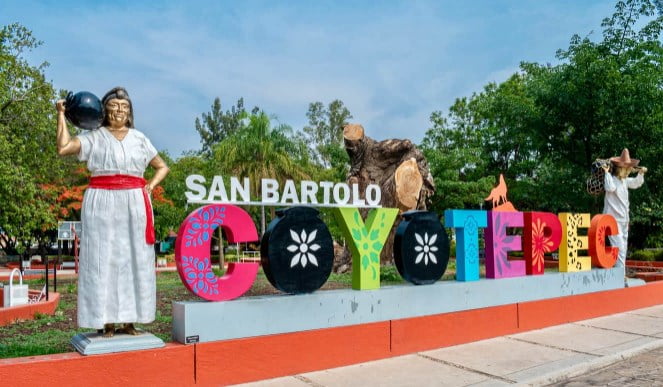Scattered throughout the state of Oaxaca are small folk-art villages, where you can meet artisans, see how traditional goods are made, and bring back a souvenir of your travels if you choose.
Each village specializes in a different craft: Teotitlán del Valle is known for its textiles, San Bartolo Coyotepec for black pottery, and San Martín Tilcajete and San Antonio Arrazola for (brightly colored fantastical animal sculptures), to name just a few.

You can wind down at a temazcal (meaning “house of heat”), a traditional Zapotec sweat lodge. You’ll sit in a small domed hut that becomes increasingly warmer. You’ll rub everything from clay to fresh fruit juices and peels on your skin as you heat up, cooling down by dunking yourself in cold water. It’s a very meditative, spiritual experience with numerous health benefits.
Visits usually last an hour and cost around 600 MXN.
If you’re in town on a Sunday, be sure to visit Mercado Tlacolula, one of the most popular markets in the region. It’s been in operation for centuries and is a good place to buy local crafts, produce, food, and everything in between. It’s located 45 minutes outside of town, so you’ll need to drive there or take the bus, but it’s absolutely worth the journey.
Thousands of people come here, and there’s tons of amazing food to try. Don’t skip the barbacoa (stewed meat) and chicharrón (fried pork rinds)!

Just 10 kilometers (6 miles) from the center of Oaxaca, in the humble town of Santa María del Tule, is the world’s widest tree.
Estimated to be 1,500-3,000 years old, Montezuma cypress (Mexico’s national tree) has a diameter of about 14 meters (46 feet) and is a magnificent sight to behold.


